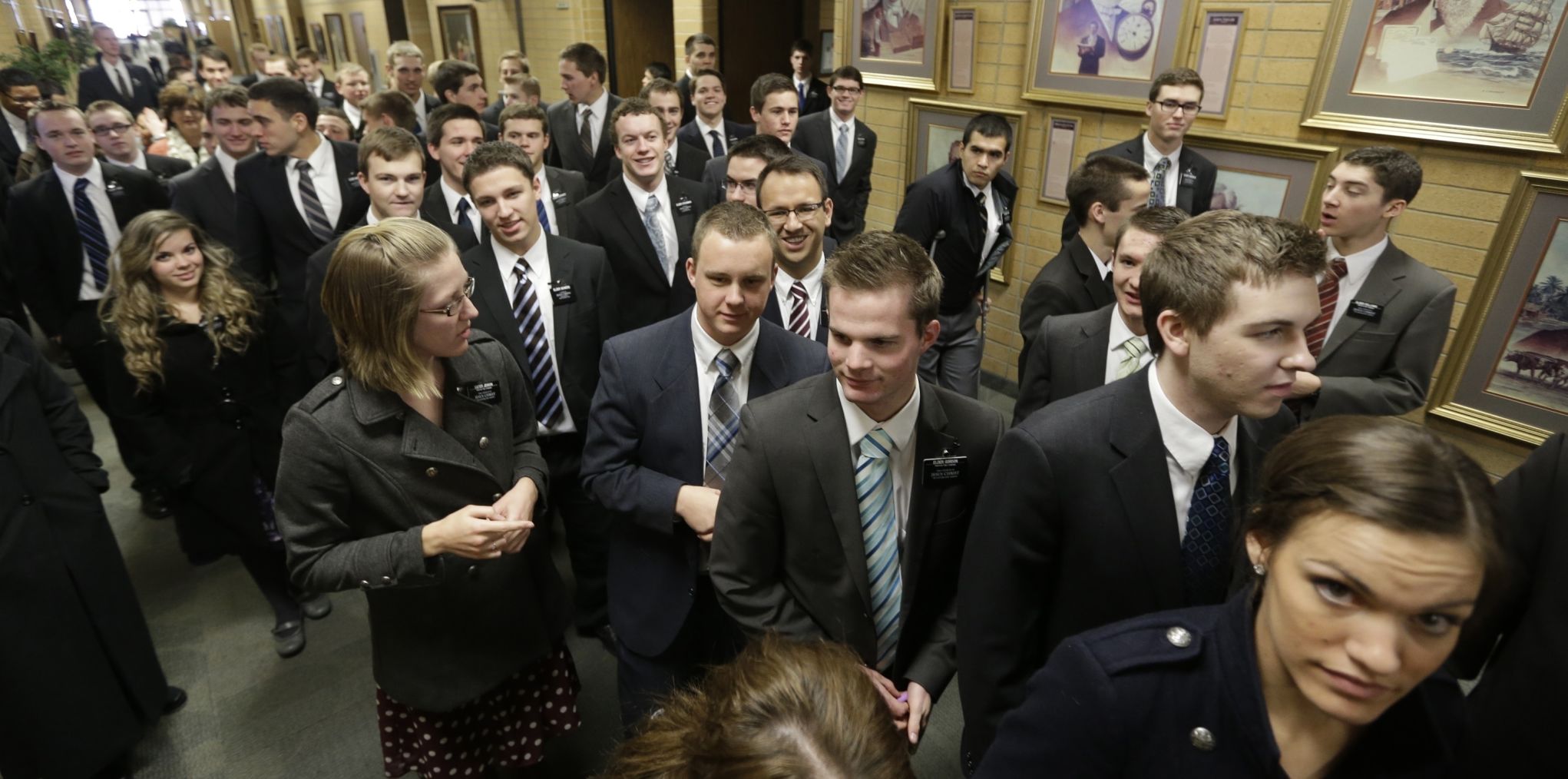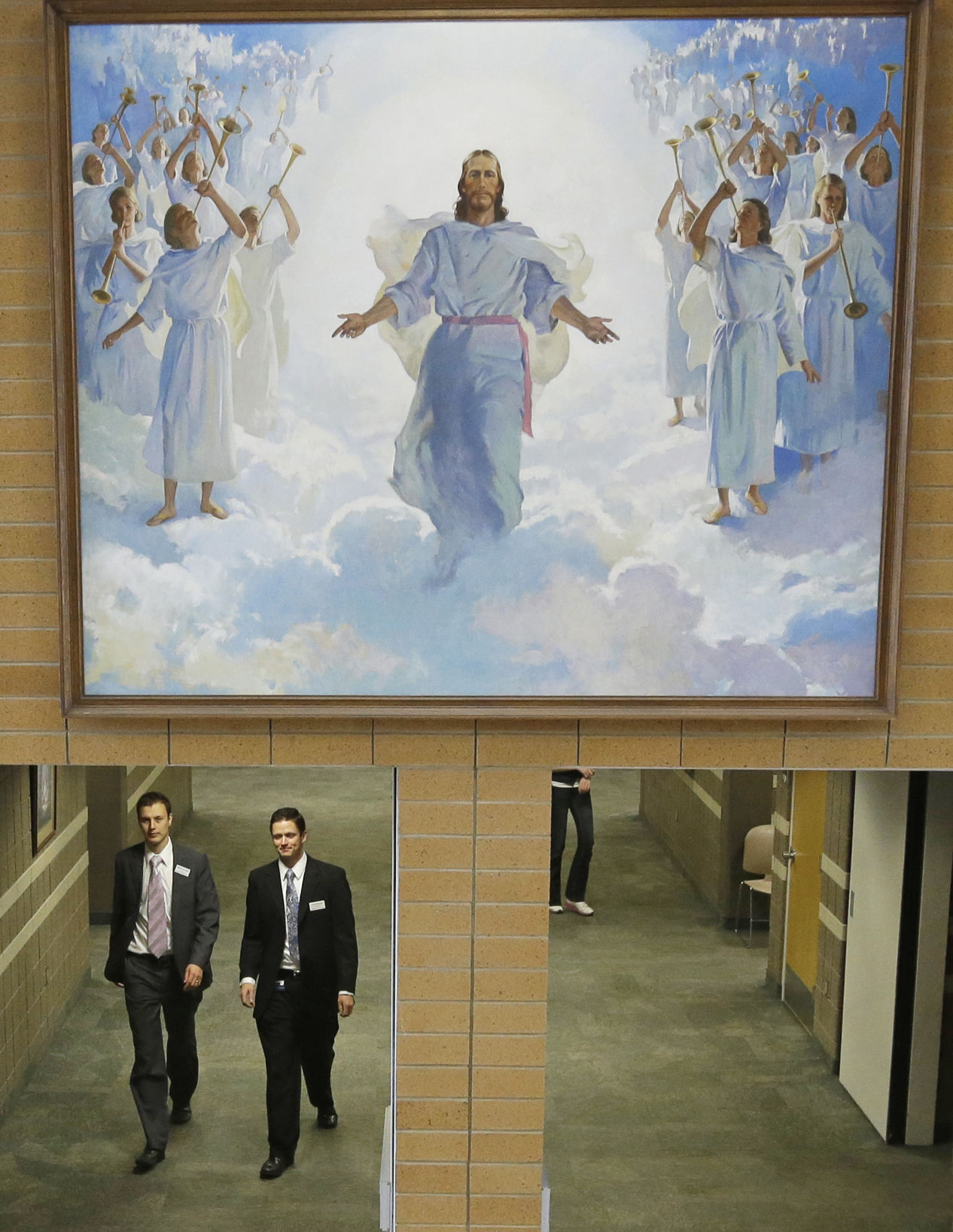SALT LAKE CITY (AP) — The Mormon church’s gradual embrace of the digital age for missionaries took another step forward Friday as the religion announced it is nearly doubling the missions where technology is allowed and swapping out tablets for
SALT LAKE CITY (AP) — The Mormon church’s gradual embrace of the digital age for missionaries took another step forward Friday as the religion announced it is nearly doubling the missions where technology is allowed and swapping out tablets for smartphones.
The change signals ongoing adaption to reflect how people communicate and interact as the religion updates rules for young men and women who have traditionally relied on door-to-door proselytizing to recruit converts, The Church of Jesus Christ of Latter-day Saints said in a news release Friday.
The number of missions using smartphones is being increased to 162, from 87 previously, the church said. It wasn’t immediately clear how many missionaries that includes.
The religion said that most missionaries in the future will bring smartphones.
The smartphones can be used only to help prospective converts, and not for personal browsing or texting. The smartphones will be outfitted with apps for scriptures, manuals, magazines and other teaching materials. Missionaries can also use social media to talk with possible converts.
The move comes after the Utah-based religion launched a program to give some missionaries tablets in 2014. The year before, the religion loosened rules on internet use for missionaries, allowing them to send emails to friends, priesthood leaders and new converts.
“The online world is helping those asking life’s most important questions find the church,” the religion said in a primer on the changes. “Technologies can identify those who might be interested in the gospel, and the church is using such tools to help those interested in spiritual things connect with the church’s resources.”
The Utah-based religion, which counts nearly 16 million members around the world, also said Friday that it’s implementing a set of 16 standardized questions designed to ensure local lay leaders properly screen prospective missionaries. Previously, lay leaders received only general guidance.
The standardized questions don’t raise the bar or change any rules about who can serve a mission, church officials say, but are meant to make sure local and regional leaders around the world are all asking the same questions and following the same guidelines. Previously, the leaders were only given general guidelines.
The questionnaire offers a window into how missionaries are screened for non-Mormons who may not be familiar with the religion’s lifestyle guidelines.
The questions for prospective missionaries are intended to ensure people are “prepared, worthy and healthy,” according to the church. The local and regional lay leaders will be asking young men and women if they’re following church standards that include avoiding drugs and pornography and abstaining from pre-marital sexual relations. If not, the prospective missionaries must explain the past transgression and what it means to repent.
They will also be asked if they’ve committed any crimes, including sexual abuse.
Local leaders will also screen for any physical or mental health conditions that could interfere with missionary work.
The standardized questions come after the church for the first time ever this summer sent out a survey all missionaries to gauge safety conditions. The results aren’t being released.
The third change announced was an unspecified reduction of 400 missions to reflect a drop in missionaries following a historical surge after the church in 2012 lowered the minimum age for missionaries from 21 to 19 for women and from 19 to 18 for men.
That led to 88,000 missionaries at the peak in 2014. That number has regressed to more normal figures. Today, there are nearly 70,000 missionaries.
Missions are considered rites of passage for many Mormons, broadening their perspective on the world, strengthening their faith and helping prepare some for future leadership roles within the church. Men serve two years while women go for 18 months.



